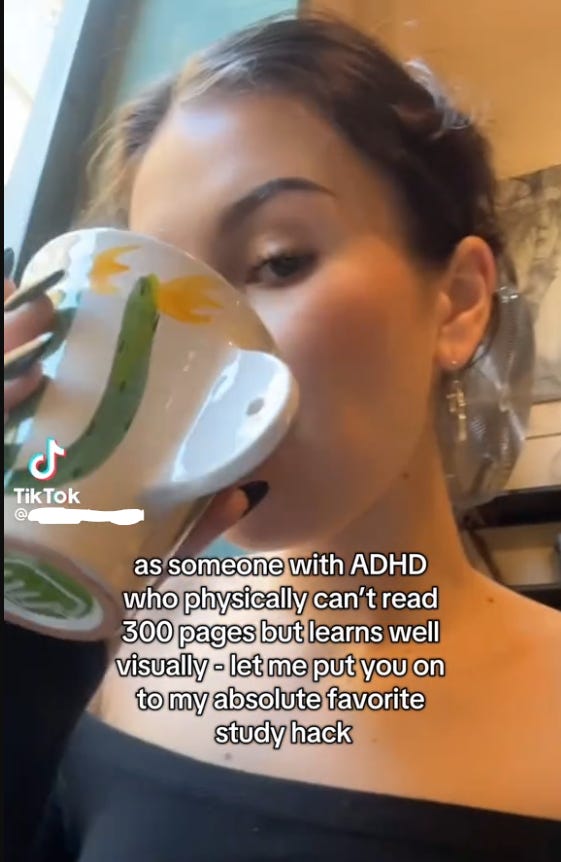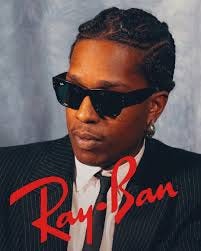Happy Friday!
This week we’re jumping into a trend signal that we’ve been watching for a while — what makes WOM, fun?
Every brand wants to be trusted, but in today’s digital landscape, trust is no longer given—it’s negotiated, tested, and constantly in flux. Consumers are skeptical, hyper-aware of marketing tactics, and bombarded with AI-generated content that makes everything feel engineered. Authenticity is the goal, but the moment something looks “too polished,” it loses credibility.
So what happens when word-of-mouth evolves into something even more elusive—gossip?
This week, we’re digging into how gossip-driven storytelling is quietly reshaping brand marketing. From TikTok hacks to underground product rumors, we’re seeing a new mode of consumer engagement that leans into speculation rather than authority. Brands can either resist this shift—or learn how to play within the grey area of curiosity, trust, and discovery.
Let’s spill.
Gossip as a Marketing Strategy: The Shift from Word-of-Mouth to Word-of-Mystery
As digital spaces become more chaotic—flooded with engagement-bait hot takes, AI-generated content (and creators), and algorithmically biased information streams—gossip is emerging as a trusted mode of communication.
The question isn’t just who is saying it? but how it's being said.
Brand campaigns are too polished. People instinctively distrust anything that feels overtly produced or transactional.
Influencer partnerships are too obvious. Overexposure to #sponsored posts has created an immunity to paid endorsements.
“Authenticity” is expected but also suspect. Even the realest-looking content can be engineered, deepfaked, or optimized for virality.
And yet, consumers still crave truth, relatability, and community from brands.
This is where gossip enters the conversation.
Gossip isn’t positioned as truth—it’s framed as speculation, a secret, a hack, or a whispered “Did you know?” It invites participation instead of dictation, turning consumers into active investigators rather than passive recipients of information.
Should brands be gossiping more? Let’s break down why this mode of communication is winning.
Why Would I Lie? The New Trust Equation
Traditional marketing aims to be authoritative—a brand tells you what to believe. Gossip takes a different approach: it asks you to investigate for yourself.
A TikTok creator posts a video claiming “This $6 drugstore lotion has the same formula as a $300 luxury cream.”
A Reddit thread claims a new McDonald's menu hack lets you build an “off-menu” burger that tastes better than anything official.
A beauty influencer whispers: “No one wants you to know this, but this obscure Korean sunscreen is the best SPF on the market.”
These posts don’t present definitive truth. Instead, they position skepticism as an opportunity for discovery.
People don't just listen to gossip—they test it. They try the lotion, order the burger, buy the sunscreen.
If they prove it true, they spread it further. And now, the brand is circulating through networks in a way that feels organic, not orchestrated.
The Quest for Truth: Discovery vs. Authority
Gossip succeeds because it operates within today’s fractured trust landscape. Instead of making a claim, it raises a question—and that subtle shift makes all the difference.
Traditional Marketing → "Our product is the best." (Authority)
Gossip Marketing → "Have you heard that this product might be a game-changer?" (Discovery)
This reframes skepticism as engagement.
In an era where people distrust obvious advertising, gossip marketing works because it leaves room for speculation and personal validation. Consumers don’t feel like they’re being sold to—they feel like they’re discovering something before everyone else.
And in a culture where being “in the know” is social currency, that feeling is irresistible.
Gossip Feels Intimate—Even When It’s Public
I watched a video where a woman walked the streets of New York, explaining her weekend ritual—staying in Friday night, then heading to a sauna and ice bath in Flatiron on Saturday.
She isn’t selling a product—she’s whispering a secret.
The noise of the city, the rustling of her jacket sleeves, the sound of her voice close to the mic—these aren’t distractions, they’re part of the intimacy.
The video is edited to ignore practical realities (like checking in, finding a locker, changing clothes), keeping the illusion that we’re watching her sneak into an exclusive wellness experience.
This is attention mastery. It hacks the brain’s reward system—the viewer keeps watching, waiting for something to happen. And by the time it does, they’re already hooked.
But gossip doesn’t just hook attention. It demands validation. The ultimate satisfaction isn’t just watching the video—it’s going to see for yourself.
Key Takeaway for Brands:
The best brand-driven gossip doesn’t feel like marketing—it feels like a peek into someone’s personal ritual.
Leaning into sensory authenticity (ambient sound, personal narration, raw editing) makes content feel unfiltered, even when it’s crafted with precision.
The “Forbidden” Trick That Feels Too Good to Be True
Then there’s the Wendy’s employee who casually tells her TikTok followers how to get more food for less money.
She’s in uniform, speaking from the Wendy’s kitchen—a reliable source, but still an insider revealing “forbidden” knowledge. The real trick isn’t just in the information—it’s in the dynamic between authority and rebellion.
When Wendy’s responds to the video, the employee’s reaction is even better: “If me getting fired means I helped millions afford a good meal, I’m fine with that.”
Suddenly, she’s a hero—a selfless truth-teller risking her job for the good of the people. But let’s be real: Wendy’s isn’t losing here.
Thousands of curious customers head to their local Wendy’s to test the hack for themselves.
The company isn’t being exposed—it’s being reframed as the brand with the “good meal” that insiders love enough to “leak” to the public.
Key Takeaway for Brands:
Gossip thrives when there’s a tension between access and authority—consumers love the idea that they’re getting something corporate “doesn’t want” them to have.
If a “hack” benefits both the consumer and the brand, it’s a perfect viral loop.
What Brands Can Learn From Gossip
1. Make Your Message Feel Like a Secret, Not a Statement. Instead of blasting "NEW DROP: LIMITED EDITION COLORWAY", position it as:
"A few people spotted an unreleased color on our founder’s IG story…👀 no official word yet, but it might be dropping soon."
2. Lean into the “Hack” Mentality
Instead of “Our blender makes the smoothest smoothies.”
Try: “People are saying this blender secretly outperforms $800 models. Who’s tested this?”
3. Let the Internet Do the Work
Position your product as something to be investigated, tested, or debated—not just consumed.
Encourage “first-hand accounts” rather than official statements.
The Gossip Economy is Here
In the algorithmic wilderness, brand messaging needs to evolve. Consumers are no longer just watching—they’re investigating, validating, and spreading narratives themselves. Gossip isn’t just a passive form of entertainment; it’s an active mechanism for marketing discovery.
The question isn’t just "Should brands gossip?"
It’s: "Can your brand survive without being talked about this way?"
We don’t have all the answers yet. This shift in consumer behavior is still unfolding, and the role of gossip in brand storytelling is evolving in real-time. What we do know is that the rules of trust, engagement, and discovery are changing, and brands that want to stay relevant will need to pay attention to how consumers are actually sharing and validating information. We’ll continue to observe these shifts from a meta perspective, tracking how brands, creators, and consumers navigate this new landscape—because in an era where everything feels like a performance, gossip might just be the most honest form of marketing left.
Lenovo Collaborates with Dazed and Google to Merge Technology with Creativity.
Lenovo, Dazed, & Intel Collaboration: Lenovo joined forces with Dazed and Intel to launch the Make Space platform, which empowers young creatives by merging technology with artistic expression. The initiative, showcased at the Dazed Archive Live event in New York on February 13th 2025, featured interactive workshops and live demos on AI in creativity. This move taps into an emerging creative market while reinforcing brand loyalty among younger, tech-savvy consumers, potentially driving long-term engagement and innovation.
Lenovo & Google Collaboration: In early 2025, Lenovo partnered with Google to roll out the Google Meet Series One Hardware and introduce the Chromebook Duet 11. Designed for the hybrid work environment, the Chromebook features a Quick Insert button that provides instant access to AI-powered tools like “Help me write” and image generation. This strategy directly addresses the growing demand for seamless digital collaboration, positioning Lenovo as a leader in integrating AI into everyday work solutions and expanding its appeal across both enterprise and consumer segments.
1X Technologies' NEO Gamma Launch Campaign.
1X Technologies unveiled NEO Gamma, an AI-powered humanoid robot designed for home integration. The launch campaign combined product demonstrations with strategic partnerships to showcase NEO Gamma's capabilities and appeal to a broad audience.
Product Demonstrations: 1X showcased NEO Gamma's advanced features through interactive online events, allowing potential customers to experience its functionalities firsthand.
Strategic Partnerships: The campaign included collaborations with tech influencers and media outlets, such as an unboxing video featuring the Nothing Phone (3a), to reach a wider audience and build credibility.
Acquisition of Kind Humanoid Inc.: To accelerate development, 1X acquired Kind Humanoid Inc., aiming to enhance NEO Gamma's AI capabilities and human-robot interaction. The Robot Report
What do you think about the video by the way? Is it eerie or is it calm?
Ray-Ban Appoints A$AP Rocky as First-Ever Creative Director.
Ray-Ban & A$AP Rocky Collaboration: Ray-Ban has named A$AP Rocky as its inaugural Creative Director, entrusting him with the creative direction of Ray-Ban Studios. This partnership aims to blend Ray-Ban's iconic heritage with Rocky's innovative style, appealing to a younger, fashion-forward audience. The collaboration is set to launch in April 2025 with the "Blacked Out Collection," a modern reinterpretation of Ray-Ban's Mega Icons, featuring gold-plated details and ultra-black lenses. This strategic move positions Ray-Ban at the intersection of fashion and music culture, potentially expanding its market reach and reinforcing its relevance in contemporary style.
A$AP Rocky's Influence in Fashion and Culture: Beyond his music career, A$AP Rocky has established himself as a fashion innovator, collaborating with brands like Gucci, Dior, and Bottega Veneta. His appointment as Ray-Ban's Creative Director reflects his growing influence in the fashion industry and his ability to merge artistic expression with commercial appeal. This collaboration not only enhances Ray-Ban's brand image but also aligns with current trends of celebrity-driven fashion initiatives, potentially attracting a diverse and global consumer base.
It is what it is.
We break down the wins—and the misses—of top consumer tech brands.
Expect deep dives, cultural signals, and community-driven insights that go way beyond the usual GTM playbooks.
Reach out: mo@hybrid-rituals.com
Agency: www.hybrid-rituals.agency
Media Platform: www.hybrid-rituals.com














